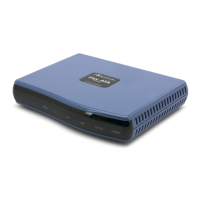MP-20x
Release Notes 20 Document #: LTRT-50511
A new configuration parameter – “Connect on 180” has been defined. When this parameter is
enabled, media is connected upon receipt of 180, 183 or 200 messages. When the parameter is
NOT enabled, media is connected upon receipt of 183 and 200 messages only.
MWI notification is NOT generated if there is an ongoing call. The indication is generated when the
call ends.
Added FaxMaxRate negotiation. Negotiation takes place for T.38 SDP media attribute
“T38MaxBitRate”. If the remote side requests a decrease in the value of this field, the DSP is
updated with this new value.
New regional settings supported for Argentina region.
The table below lists the MP-202 supported features:
5.2 Resolved Constraints in Version 2.6.0
The following bugs were fixed in Version 2.6.0:
CED detection is not received starting from the second T.38 session (DSP bug).
When dialing # & * busy tone was heard.
Enable sending # as a dialed digit.
The ptime attribute was removed from DTMF (101) in SDP body.
Enable CNG Detection: In Voice over IP Æ Voice and Fax the “Enable CNG Detection” check-box
was not operable. When the local fax machine connected to the MP-202 receives a fax, the MP-
202 switches to T.38 fax relay upon detection of the CED signal from the remote fax. If the local fax
machine sends a fax, the MP-202 switches to T.38 only after detecting the CNG signal from the
local side and
the CED signal from the remote side. If the “Enable CNG Detection” checkbox is
enabled, the MP-202 switches to T.38 relay immediately upon detection of the CNG signal from the
local side, without waiting for the CED signal from the remote side.
5.3 Known Limitations in Version 2.6.0
Following are the known limitations:
Faxes can be sent between the two local lines only if the chosen fax transport mode is Transparent
(in G.711).
The Web interface is not automatically refreshed during the firmware upgrade process.
After the dial tone timeout has expired (and a fast-busy tone is played), the user can still make an
outgoing call.
A silence period of about three seconds is created after pressing the ‘Flash’ key during a
conversation (normally, the user presses ‘Flash’ + ’1’, ‘Flash’ + ’2’, or ‘Flash’ + ’3’). This limitation
does not occur when in ‘Flash only’ key sequence mode.
When pressing ‘Flash’ + ’1’ or ‘Flash’ + ’2’ (for call hold and transfer), the DTMF is sometimes
heard at the remote side.
QoS traffic shaping: Enabling ‘TCP Serialization’ may cause problems viewing real-time video
streams on a PC that is connected to the device.
Caller ID Type II audio indication is sometimes heard by both the calling and the called parties. The
remote side doesn't hear the FSK; only a 2833 DTMF tone.

